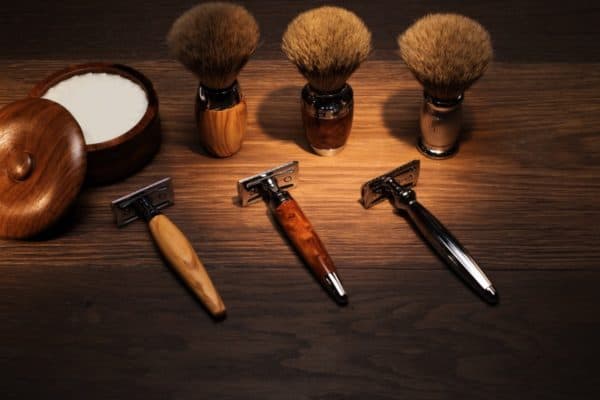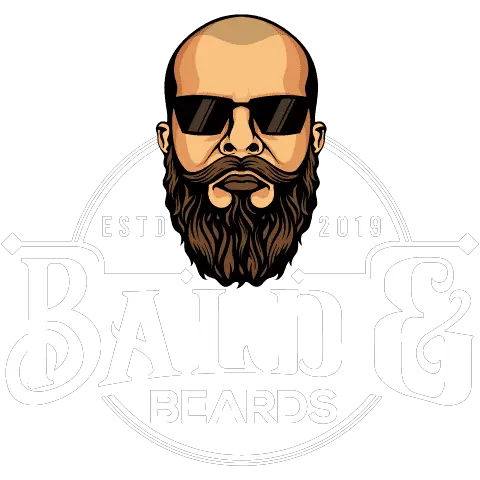For those skin types prone to breakouts, you know the skepticism well when looking at products made “for sensitive skin.” When you get pimples from shaving, that could be the exact issue. Many shaving creams and after shave products have irritating chemicals that can dry out and exacerbate pimples.
If your skin looks irritated and sprouts pimples after shaving, there may be a simple solution, such as changing out your razor blades. By following our expert shaving tips, you can rid yourself of acne and razor bumps following close shaves.
How to Prevent Pimples After Shaving
Pimples after shaving can be prevented by preparing your skin with a warm, damp washcloth and using a high-quality shaving cream or shaving soap.
Your shaving routine is the most important step to preventing razor burns and acne after shaving, especially if your beard grows in thicker. Many men experience ingrown facial hairs from improper shaving regimens and dull razors.
Expert tips to avoid these issues when shaving so your skin looks bright and smooth:
1. Use Quality Razors
So why do you get pimples after you shave? Your razor is stripping away that top layer of skin, much like any other skin exfoliant.
If you don’t have a clean razor and proper shaving cream, you leave your face more open to irritation and clogged pores. In other cases, a dull, old razor can lead to ingrown hair pimples.

Clean, Sharp Razor
Shaving requires an adequate blade that you’re comfortable with. Whether you like manual razors, electric trimmers, or even a straight razor, your skin is very susceptible to acne after shaving.
The quality of your razor and the blades make a difference. If your blade isn’t sharp enough or hasn’t been replaced in a while, you’ll likely have to shave one spot over and over, which can lead to razor bumps and acne.
It’s best to always clean your razor and change out the blades after the 2nd or 3rd use. See our guide to safety razors for more tips on high-quality shaving gear.
2. Rinse, Wash or Exfoliate
You should always open up your pores before shaving with warm water. Applying a hot towel treatment or warm, wet washcloth to your face, to prep your skin and hair follicles. This opens up your pores and moisturizes the skin.

Another option is to wash your face with a hypoallergenic beard wash or a mild exfoliant scrub before shaving. Performing this step will before shaving will remove dead skin cells and help prevent ingrown hairs.
3. Use a Quality Shaving Cream
Some side effects for alcohol and petroleum-based ingredients is skin irritation, redness, and bumps. Since you’re removing dead skin cells, it only makes sense to treat the surface of the skin as gently as possible.

Sensitive Skin Shaving Cream
There are shaving lathers, foams, and gels. You want a shaving cream that works best for sensitive skin, which generally means no alcohol or petrol-based chemicals in the formula. We suggest shaving gel or a lubricating foam with witch hazel instead of alcohol-based products.
Next, you’ll apply a moisturizing shaving cream to make it easy for your razor to glide over the contours of your face, removing hair smoothly as you shave. You may also want to try a pre-shave oil to prevent red bumps and razor burn.
4. Shave in the Right Direction
Your shaving technique may need to change if you see razor bumps and pimples after shaving. You may think you have to shave in all directions to remove your hair cleanly.
However, a good razor removes hair with the first pass, so you may need to change out your razor if you can’t remove hair by shaving in the same direction hair grows.

Shaving in the opposite direction of your hair’s growth will only irritate your skin as it pulls up hair, making it more difficult with the second and third passes.
5. Apply an Aftershave Treatment
Once you’ve finished shaving, you should apply a calming aftershave made for sensitive skin. We make some recommendations in our best aftershaves guide.
A little aftershave splash after you finish shaving can prevent itchy skin and razor burn.

Aftershave creams are designed to soothe your skin and seal in moisture, preventing more oil and debris from getting into your pores while still sensitive after shaving. Most aftershave creams have a light scent and contain antibacterial ingredients.
Sensitive Skin Aftershave
You also want to make sure you’re using a great aftershave that won’t clog your pores. Aftershave creams should be lightweight and cleansing for your sensitive skin, while also adding a protective layer to ensure clean pores.
If you don’t already use a high-quality aftershave, this may be the one step that could save your skin.
Post Shave Care
Pimples after shaving may be hiding ingrown hairs. These are larger, red pustules that typically have a trapped hair causing the clogged pore.
You can use a hot compress to control swelling. If you see the trapped hair, you may want to use tweezers to pull the hair out—but don’t! This only causes more harm. Instead, clean the area with soap containing tea tree oil or aloe vera.
Salicylic acid treatments can also dry out and heal pimples after shaving.
Exfoliating your beard again may also help with ingrown hairs and acne, particularly if you have dead skin (typically resulting in beard dandruff). Just don’t overdo it – once or twice daily.


